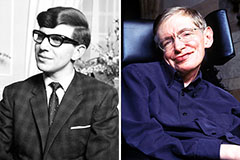The Advancement of Figurative Oil Painting: Understanding Its Historical Value and Modern Interpretations
The development of metaphorical oil paint works as an engaging lens whereby to check out the interplay in between imaginative expression and historical context. From the thorough naturalism of the Renaissance to the emotive power of the Baroque, each period has added layers of definition and method to this classic medium. Contemporary artists, attracting from this rich heritage, are now reinterpreting the human figure in means that challenge traditional narratives. As we explore these changes, one have to think about just how the dialogue in between existing and previous informs not only creative method but additionally social representations in a progressively complex globe.
Beginnings of Metaphorical Oil Painting
The beginnings of figurative oil paint can be traced back to the early Renaissance in Europe, especially in the 15th century. The growth of oil paint allowed for greater depth of color and information, enhancing the realistic look and vibrancy of their work.

In this transformative age, figures were frequently illustrated within contextually abundant atmospheres, showcasing not just their physical attributes but also their mental states. Leaders such as Jan van Eyck and Titian utilized the tool's adaptability, employing layering methods to achieve brightness and structure. This development facilitated the representation of detailed materials and the nuances of skin tones, contributing to the development of portraiture and narrative scenes.
In Addition, the Renaissance emphasis on humanism promoted an appreciation for individualism, which subsequently affected musicians to create more vibrant and relatable numbers - figurative oil painting. Consequently, figurative oil paint arised as an effective vehicle for narration and psychological engagement, laying the groundwork for future imaginative activities and styles
Key Historic Motions
Substantial historic activities have shaped the advancement of metaphorical oil paint, each adding unique ideologies and techniques that increased the tool's possibilities. The Renaissance marked a pivotal minute, highlighting realism and the human kind, with artists like Leonardo da Vinci and Michelangelo pressing the borders of physiological accuracy and point of view. Following this, the Baroque period brought remarkable contrasts of light and darkness, exemplified by Caravaggio, that infused spiritual themes with intense emotionality.
The 19th century introduced Romanticism and Realistic look, where artists such as Delacroix and Courbet tested timeless suitables, concentrating on private expression and day-to-day life. The introduction of Impressionism better changed the tool by highlighting the effects of light and shade, bring about a departure from standard depiction.
In the early 20th century, movements like Expressionism and Cubism redefined figurative paint through abstraction and the exploration of emotional deepness. Each of these activities not just reflected the societal modifications of their times but also prepared for contemporary interpretations. The interaction between these historic activities has actually developed a rich tapestry of philosophies and designs, affecting modern-day musicians in their quest of catching the human experience on canvas.
Strategies and Products Evolution
.jpg)
Throughout the Baroque duration, strategies such as chiaroscuro and sfumato emerged, improving the emotional vibration of figurative make-ups. Musicians started to experiment with glazes and impasto, controling texture and luminance. By the 19th century, innovations like using pre-mixed paints in tubes transformed accessibility, permitting musicians to repaint en plein air and record the fleeting effects of light.
The 20th century saw the introduction of artificial pigments and tools, which increased the combination and changed the uniformity of oil paints. The expedition of brand-new application methods, such as combination blades and brushes of varying stiffness, more varied imaginative expression. Collectively, these advancements show the visite site developing partnership between materials, methods, and the creative vision inherent in metaphorical oil painting.

Contemporary Analyses
Contemporary analyses of figurative oil painting show a vibrant dialogue between practice and innovation, where artists test developed standards and explore varied styles. This advancement manifests in various means, as contemporary artists blend timeless techniques with modern-day principles, usually attending to social, political, and personal stories.
Several specialists attract ideas from historic works, yet they infuse their pieces with modern point of views, making use of the human type as a vehicle for commentary on gender, culture, and identification. Artists significantly experiment with abstraction, distortion, and mixed media, which enables a more comprehensive interpretation of the number and its context.
Furthermore, using brilliant shade schemes and non-traditional make-ups frequently offers to interfere with standard checking out experiences, prompting important interaction from audiences. This change in focus extends beyond visual appeals; it reflects an expanding awareness of the intricacies of human experience in an interconnected globe.
As figurative oil paint remains to evolve, it continues to be an important medium for discovering the nuances of modern life, symbolizing click for source both a regard for heritage and a dedication to progressive thought. The result is an abundant tapestry of expression that reverberates with the intricacies of the contemporary human condition.
Effect On Modern Art
The effect of metaphorical oil paint on modern-day art is profound, as it has actually continuously motivated a myriad of imaginative movements and techniques throughout the 21st and 20th centuries. From Expressionism to Surrealism and past, the expedition of the human number has actually stayed a central motif, allowing artists to convey complicated emotions and narratives. This emphasis on metaphorical depiction has led to a re-examination of typical methods, leading to cutting-edge strategies that mix realism with abstraction.
Additionally, modern musicians have embraced figurative oil painting as a way to attend to social and political concerns, utilizing the tool to test assumptions of society, identity, and sex. The revival of passion in figurative work in current years reflects a yearning for connection in a progressively electronic globe, where human experience and emotion are extremely important.
Furthermore, the discussion between figurative oil paint and contemporary art appears in the jobs of artists such as Kehinde Wiley and Jenny Saville, who attract on historical recommendations while instilling their pieces with modern importance. Inevitably, figurative oil painting proceeds to shape and redefine modern-day artistic expression, underscoring its enduring value in the art globe.
Conclusion
The development of metaphorical oil paint highlights its historical relevance and flexibility throughout numerous imaginative activities. Eventually, figurative oil paint continues to be a vital tool for discovering the human experience, reverberating exceptionally in today's digital landscape.
The evolution of metaphorical oil painting serves as a compelling lens through which to examine the interaction between artistic expression and historic context.Significant historical activities have actually formed the development of figurative oil paint, each contributing one-of-a-kind viewpoints and techniques that expanded the medium's opportunities.As historic movements shaped the trajectory of figurative oil paint, the techniques and materials employed by artists have additionally undertaken significant improvements. figurative oil painting.The effect of figurative oil painting on contemporary art is extensive, as it has constantly motivated a myriad of artistic activities and practices throughout the 21st and 20th centuries.The development Click This Link of metaphorical oil painting highlights its historical importance and adaptability throughout different creative activities
 Val Kilmer Then & Now!
Val Kilmer Then & Now! Jeremy Miller Then & Now!
Jeremy Miller Then & Now! Monica Lewinsky Then & Now!
Monica Lewinsky Then & Now! Brooke Shields Then & Now!
Brooke Shields Then & Now! Stephen Hawking Then & Now!
Stephen Hawking Then & Now!